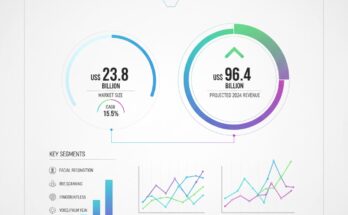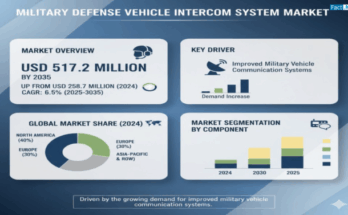In the last two decades, the Wireless Telecommunication carrier market has been evolving and transforming into a digital ecosystem. Market has evolved from a simple service provider business into a sprawling digital ecosystem. With 5G networks have been rolling at a scale and this goes beyond faster download speeds. This has been a paradigm shift in how wireless carriers are expected to support various applications such as remote surgeries, autonomous vehicles, industrial IoT, and immersive AR/VR experiences. Moreover, these use cases demand intelligence and bandwidth and that is closer to the user, with reduced lag. Edge computing works together with 5G and helps reduce delays and makes network faster and more responsive.
The Shape of the Wireless Telecommunication Carrier Industry
Once viewed as a utility like sector, it was reliable, relatively slow-moving but highly regulated. But now it has undergone a dramatic transformation. In the past, business only covered SMS bundles and talk times. But now carriers have competed on price and coverage. But today, the game has changed and it’s no longer just about voice plans.
Let’s talk about the three shifts that are driving the market growth:
· Technology-led competition: The transition from 4G to 5G has reshaped the market and it’s not just about the speed. Benefits like 5G’s low latency, ability to handle massive device connectivity, and higher bandwidth have opened the doors to new business models and use cases. Moreover, carriers now have lot of competition ahead with tech giants, hyperscale, and small startups who are also chasing the edge.
· Rising subscriber expectations: It’s no more just reliable data and calls. Now a days, modern consumers expect more from it, they expect integrated digital ecosystems and seamless systems. There are many examples that can validate this, for example: think cloud storage blended with mobile plans, AI-integrated customer support, on-demand video content and even advanced mobile banking services.
· Vertical diversification: Now a days, giants are fully invested in media streaming, connected healthcare, smart homes, and financial services. Companies like Verizon has its important role to play in edge computing, enterprises 5G.
Carriers are now emerging as multi-service platforms and bridging infrastructure with innovation. And as this trend continues, the boundary between a tech and a telecom company is not anymore very clear.
The Competitive Landscape: Beyond Coverage Maps
Without any doubts, the top companies in the market are AT&T, Verizon and T-Mobile. But many times, various factors are overlooked how these are working in the unique niche.
- Verizon’s market positioned as a major leader and its reliability and network leadership is well-known. Moreover, its aggressive 5G Ultra-Wideband deployment has kept it ahead on performance, particularly for enterprise use cases.
- AT&T is a leading player that has adopted a common strategy to bundle its various offers such as wireless, broadband and streaming services to improve value and customer retention. Moreover, these integrated services gave improved the subscriber growth and led to boost of monthly bill-paying users in the fourth quarter of 2024.
- T-Mobile: Post merger of T-Mobile with Sprint in 2020, T-Mobile has evolved as a leading competitor in the telecom industry. This merger has provided T-Mobile with an enhanced integrated band spectrum. Also, it enhances its 5G network speed and coverage.
Who’s Winning the Subscriber Race?
If we just go by numbers, then Verizon, T-Mobile, and AT&T are winning in subscriber race in the same manner. But apart from subscribers, there are many other factors/metrics available too. Operator subscriber metrics are now paired with Average Revenue Per User (ARPU), data consumption behavior and churn rate.
Though T-Mobile leads in net additions, but Verizon still wins as the highest ARPU in the segment. However, AT&T has always been a player in fiber strategy to reduce churn across wireless and home services.
AT&T has been investing a lot in its fiber network and aims to expand its reach over 30 Mn locations by the end of 2025. This enhances customer value and reduce churn (as it offers bundled services that combines broadband, wireless, and streaming options).
New Revenue Streams: Cloud, Content, and Connected Devices
Telecom operators have been a part of strategic alliances with major cloud service providers to enhance their infrastructure and service offerings. For example:
- AT&T has transitioned its 5G core network to Microsoft’s Azure platform and enables more network management and efficient service delivery.
- Verizon and IBM: Verizon has been collaborating with IBM and Red Hat to develop an open hybrid cloud platform and has been serving as the foundation of its 5G core and supporting advanced applications.
- T-Mobile and AWS: T-Mobile utilizes AWS to operate its serverless development platform, enhancing scalability and reducing operational complexities.
These partnerships have led to the deployment of edge computing capabilities and allowing for low-latency services that are essential for applications like real-time analytics and autonomous vehicles. As traditional voice SMS revenues fade, carriers have been more creative than before. Because of the partnerships with hyperscale like Google Cloud and AWS are becoming famous.
The integration of 5G technology has been transforming various sectors by letting wireless-integrated services to establish. Earlier these were unattainable due to latency limitations and bandwidth. Moreover, biggest sell phone companies in the US are repositioning themselves as advanced platforms for the future.
We have been witnessing the emergence of 5G-powered applications across various sectors, and that includes:
- AR/VR in Retail and Gaming: Various technologies like virtual reality and augmented one are being used to improve shopping experiences, and this is also taking mobile gaming to a new level of interactivity.
- Remote Healthcare: 5G roll out has enabled real-time transmission of medical data, high-definition video. It has also made remote surgeries, consultation, and patient monitoring not just possible but reliable.
- Connected Cars and Smart Cities: Vehicles have been communicating with each other and with infrastructure in real time. This also involves traffic management. Moreover, smart city initiatives like waste management, intelligent lighting, and emergency services can be efficiently powered through 5G connectivity.
The biggest cell phone companies in the USA are essentially repositioning themselves as platforms for the future.
What Lies Ahead?
The future of the Wireless Telecommunication Carrier Market depends on lot of factors, and it is more than just delivery faster speeds. While speed has been a major factor but when it comes to 5G, it is no longer the only differentiator. Their ability to build holistic digital ecosystems make then different and it integrates connectivity and a seamless user experience together.
Final Thoughts
Connectivity today means more than just internet and phone calls. Smart cities, online doctor visits, virtual reality experiences, and even factory automations are driven by these factors. Mobile plans don’t just provide data, they often come with streaming, learning tools, or games. And things like mobile payments, digital wallets, and shopping apps are now a big part of what telecom companies offer.
Moreover, commerce is deeply integrated into telecom services. Various features like mobile payments, shopping apps and digital wallets are now common features that allow users to buy services and goods through their mobile devices. Moreover, telecom companies are not just the providers of connectivity, but they are also becoming platforms that combine entertainment, education, communication, and commerce into a single seamless experience.



